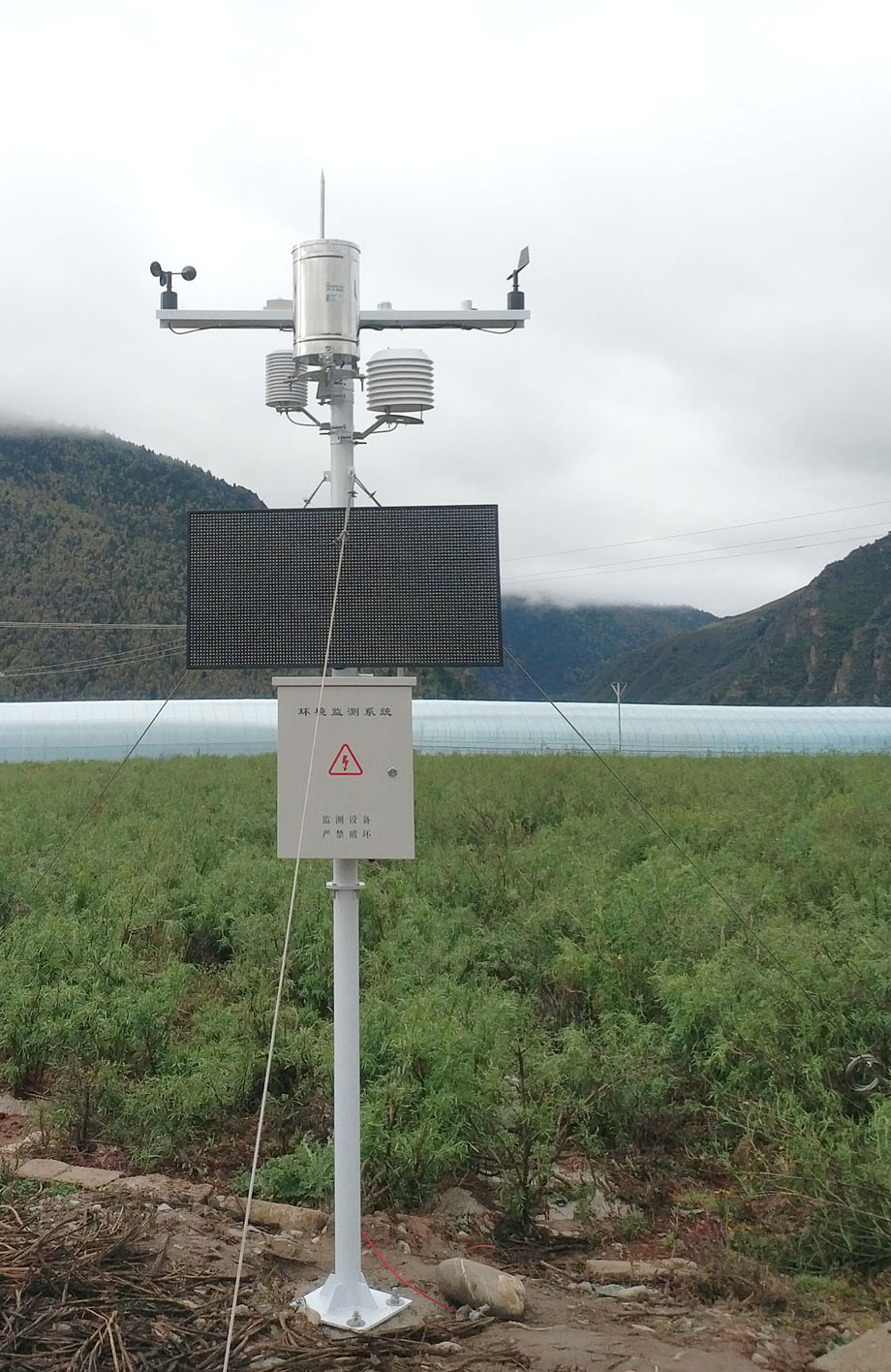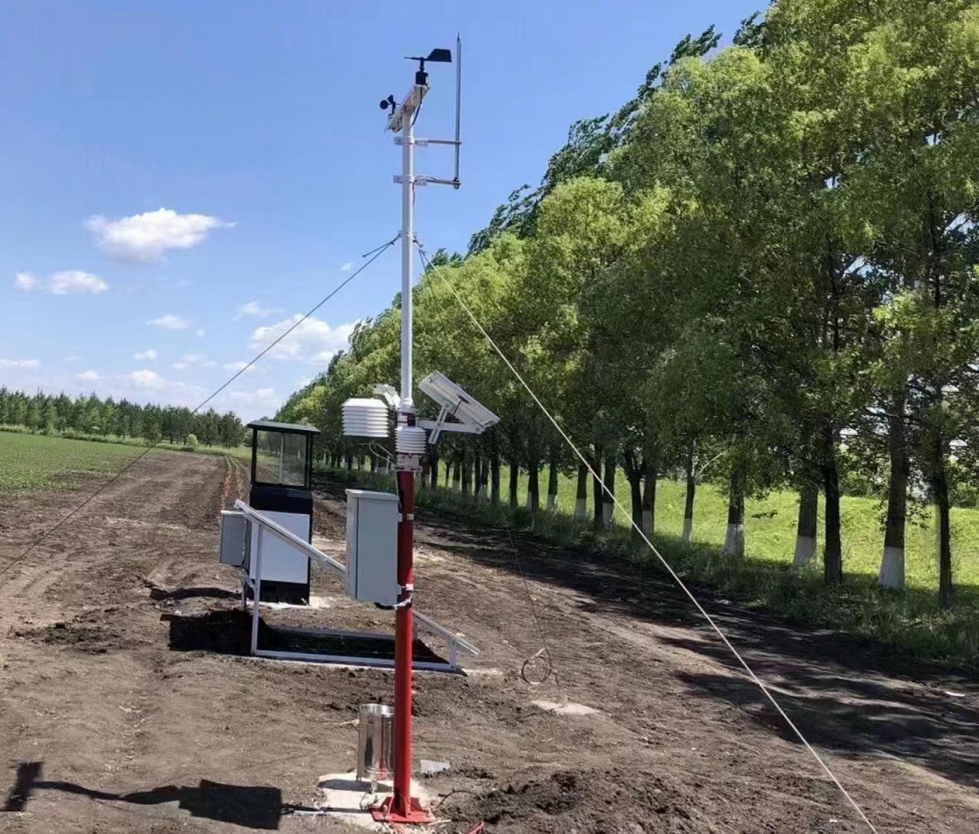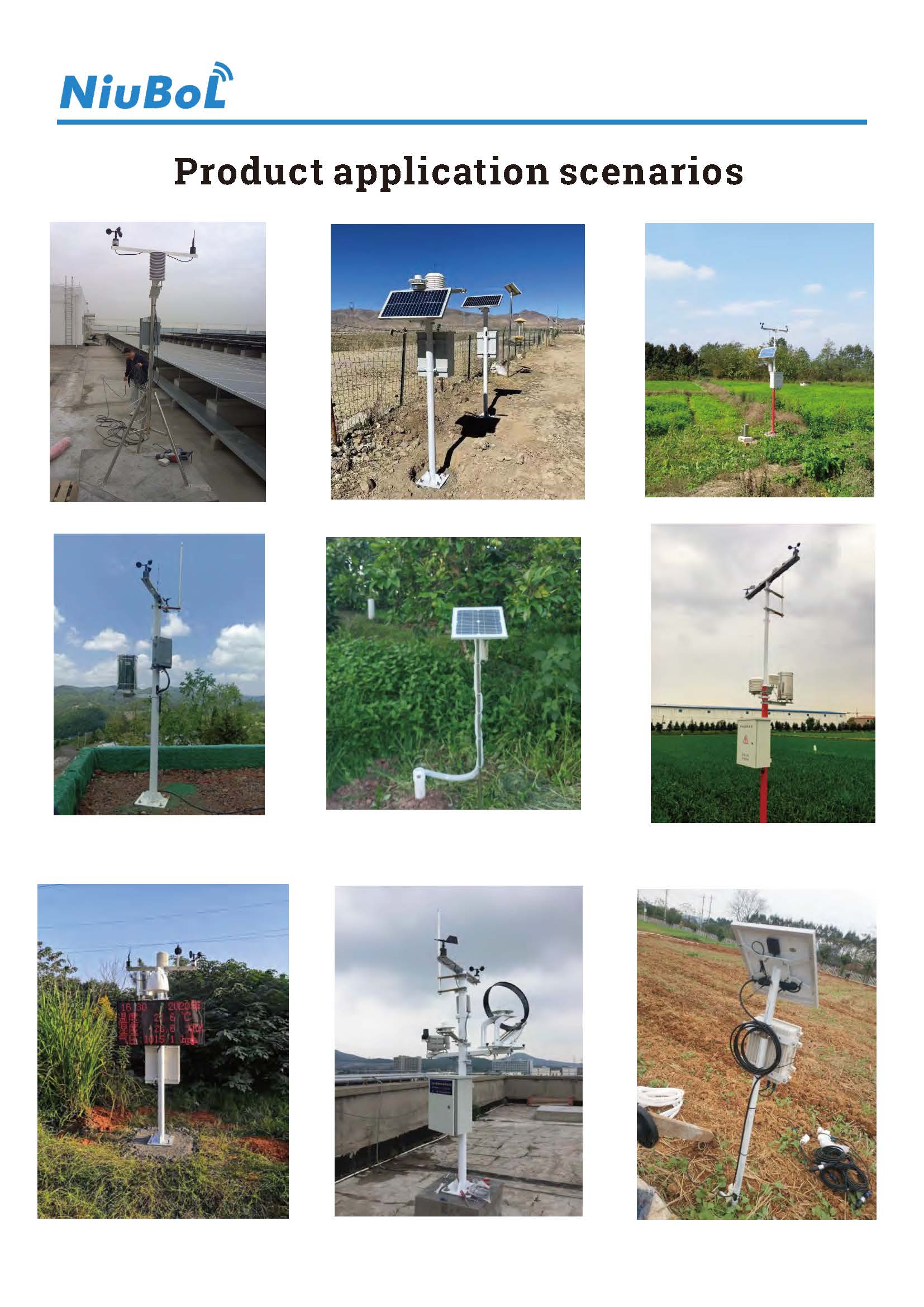

— Blogs —
—Products—
 Consumer hotline +8618073152920
Consumer hotline +8618073152920 WhatsApp:+8615367865107
Address:Room 102, District D, Houhu Industrial Park, Yuelu District, Changsha City, Hunan Province, China
Product knowledge
Time:2025-04-03 14:22:39 Popularity:122
In an era of rapid technological development, agriculture, the cornerstone of the global economy, is undergoing a profound transformation. Agricultural weather stations, as a core tool in this shift, use precise weather monitoring to help farmers increase yields, reduce risks, and promote sustainable farming practices. This article will explore the working principles of agricultural weather stations (with a special focus on the role of sensors), their main advantages, and their growing importance in modern agriculture, providing practical and clear information for international clients.

An agricultural weather station is a compact, sensor-equipped system specifically designed to monitor and record weather conditions on farms and surrounding areas. It uses high-precision sensors to measure key environmental factors such as temperature, humidity, light intensity, rainfall, wind speed and direction, and soil moisture. The data is transmitted to a cloud platform or local server, allowing farmers to access real-time information through applications or computers.
Unlike traditional weather forecasts, agricultural weather stations provide data specific to local farm conditions, offering useful insights for individual fields or greenhouses.
The core of an agricultural weather station lies in its diverse sensor network, which works together to ensure comprehensive and accurate data collection. Here are the main sensors and their functions:
- Type: Common types include thermistors or thermocouples, with an accuracy of up to ±0.1°C.
- Function: Measures air and soil temperature, reflecting the warming and cooling changes in the crop environment. For example, high temperatures may accelerate evaporation, while low temperatures could pose frost risks.
- Application: Guides greenhouse heating or outdoor crop frost protection measures.
- Type: Capacitive or resistive humidity sensors, typically with a measurement range of 0-100% relative humidity.
- Function: Monitors the moisture content in the air and soil, affecting plant transpiration and disease occurrence (e.g., high humidity promotes fungal growth).
- Application: Helps predict irrigation needs or adjust greenhouse ventilation.

- Type: Photodiodes or silicon photodiodes, measuring light in the range of 400-700nm.
- Function: Assesses sunlight intensity, directly influencing photosynthesis efficiency.
- Application: Determines the best planting time or shading needs in greenhouses.
- Type: Tipping bucket or optical rain sensors, with accuracy down to 0.1 mm.
- Function: Records rainfall amount and frequency, providing a basis for irrigation planning.
- Application: Prevents overwatering or helps take drainage measures before heavy rain.
- Type: Anemometers are typically cup-style or ultrasonic, while wind direction sensors use weather vanes or potentiometers.
- Function: Measures wind speed (in meters per second) and direction, impacting crop cooling, pesticide spraying effectiveness, and equipment stability.
- Application: Helps determine optimal spraying times or reinforce greenhouse structures.
- Type: Capacitive or time-domain reflectometry (TDR) sensors, typically measuring a range of 0-100% volumetric water content.
- Function: Monitors water content in the root zone, reflecting irrigation effectiveness and soil health.
- Application: Precisely controls irrigation to avoid both overwatering and underwatering.
- Atmospheric Pressure Sensor: Predicts weather changes, such as low pressure potentially indicating rain.
- UV Sensor: Monitors UV intensity, protecting crops from excessive radiation.
These sensors feed data into a data logger, which automatically records and transmits the information wirelessly (e.g., via Wi-Fi or 4G). Many systems are powered by solar energy, combined with batteries, ensuring continuous operation even in remote areas. The sensors' precision and durability are calibrated to withstand outdoor challenges, such as high temperatures, humidity, or dust.

Agricultural weather stations, with their network of sensors, offer significant improvements in agricultural production:
Continuous and accurate sensor data provides a clear picture of microclimates within the fields. For example, humidity sensors predict dew points, and soil moisture probes indicate irrigation needs, ensuring crops receive the right amount of water.
Sensor data trends can provide early warnings for frost, drought, or heavy rain. Alerts give farmers time to cover crops, adjust irrigation, or reinforce structures, reducing weather-related losses.
Light sensors guide planting schedules, while anemometers suggest safe pesticide spraying windows. This level of precision minimizes resource waste and improves efficiency.
Adjusting irrigation, fertilization, and pest control based on real-time conditions creates optimal growing environments. Healthy crops lead to higher yields and better quality, directly boosting profitability.
Temperature sensors detect frost risks, rain gauges warn of flooding, and soil moisture monitors help farmers proactively deal with extreme weather conditions, safeguarding their investments.

- Open Fields: In cereal or vegetable farms, rain gauges and anemometers optimize planting and harvesting times to ensure maximum productivity.
- Greenhouses: Temperature and humidity sensors work with automated ventilation or shading systems to maintain ideal conditions.
- Orchards: Soil moisture probes and light sensors guide watering and pruning decisions, enhancing fruit quality.
- Vineyards: Humidity sensors warn of fungal disease risks, protecting grape health.
Additionally, they support pest monitoring (predicting insect activity based on temperature) and provide weather records for insurance claims.

The value of agricultural weather stations extends beyond individual farms:
- Sustainability: Sensors optimize water and fertilizer usage, reducing waste and runoff, protecting ecosystems, and supporting environmentally friendly farming.
- Climate Resilience: Long-term data reveals climate change trends, helping farmers adapt to droughts or floods.
- Modernization: Integration with IoT, drones, and automation technologies pushes agriculture toward a tech-driven future.
For global farmers, agricultural weather stations turn guesswork into science. Localized, precise data from sensors replace generalized forecasts, empowering growers to make informed decisions. In drought-prone regions, they prevent over-irrigation; in rainy climates, they avoid waterlogged fields. The result is more food, lower costs, and a smaller environmental footprint.
As artificial intelligence predictions and expanded sensor arrays become integrated, these stations will become smarter, offering even sharper tools to address agricultural challenges.

Agricultural weather stations are more than just equipment—they are modern agriculture’s partners. By providing real-time, field-specific data through sensors, they help farmers increase yields, manage risks, and embrace sustainability. Whether you're managing vast wheat fields or a high-tech greenhouse, this technology paves the way for smarter, more resilient farming. In the context of climate change, it's a small investment that yields big returns—for your farm.
Prev:Applications of Meteorological Monitoring Equipment in Various Industries
Next:Working Principle and Technical Advantages of Ultrasonic Weather Stations
Related recommendations
Sensors & Weather Stations Catalog
Agriculture Sensors and Weather Stations Catalog-NiuBoL.pdf
Weather Stations Catalog-NiuBoL.pdf
Related products
 Combined air temperature and relative humidity sensor
Combined air temperature and relative humidity sensor Soil Moisture Temperature sensor for irrigation
Soil Moisture Temperature sensor for irrigation Soil pH sensor RS485 soil Testing instrument soil ph meter for agriculture
Soil pH sensor RS485 soil Testing instrument soil ph meter for agriculture Wind Speed sensor Output Modbus/RS485/Analog/0-5V/4-20mA
Wind Speed sensor Output Modbus/RS485/Analog/0-5V/4-20mA Tipping bucket rain gauge for weather monitoring auto rainfall sensor RS485/Outdoor/stainless steel
Tipping bucket rain gauge for weather monitoring auto rainfall sensor RS485/Outdoor/stainless steel Pyranometer Solar Radiation Sensor 4-20mA/RS485
Pyranometer Solar Radiation Sensor 4-20mA/RS485
Screenshot, WhatsApp to identify the QR code
WhatsApp number:+8615367865107
(Click on WhatsApp to copy and add friends)